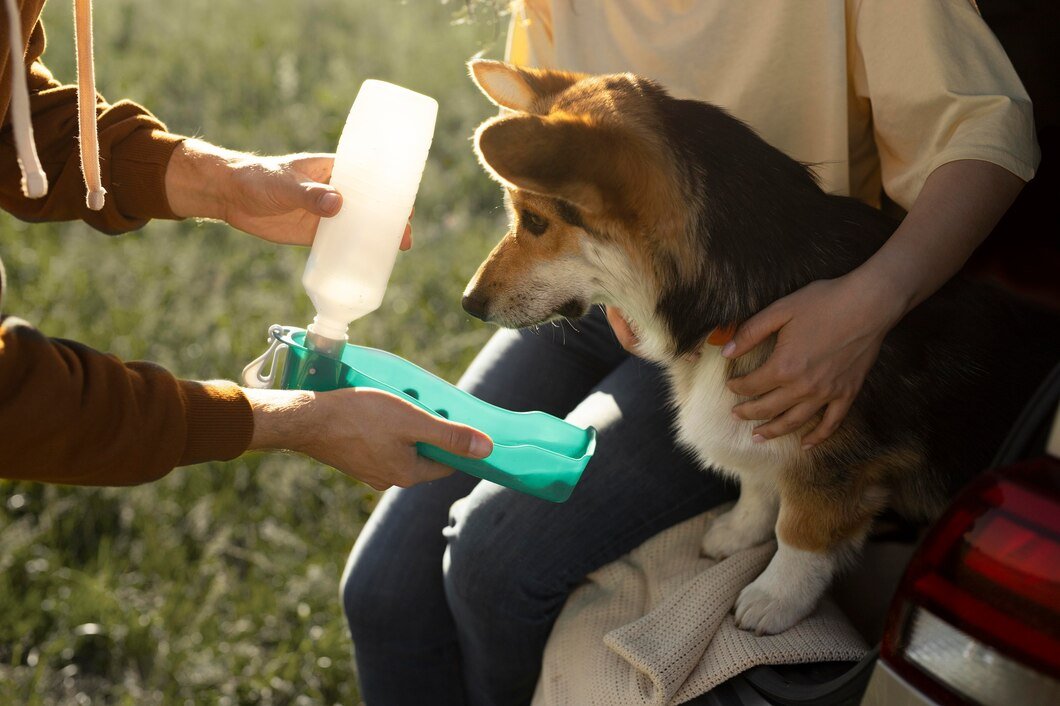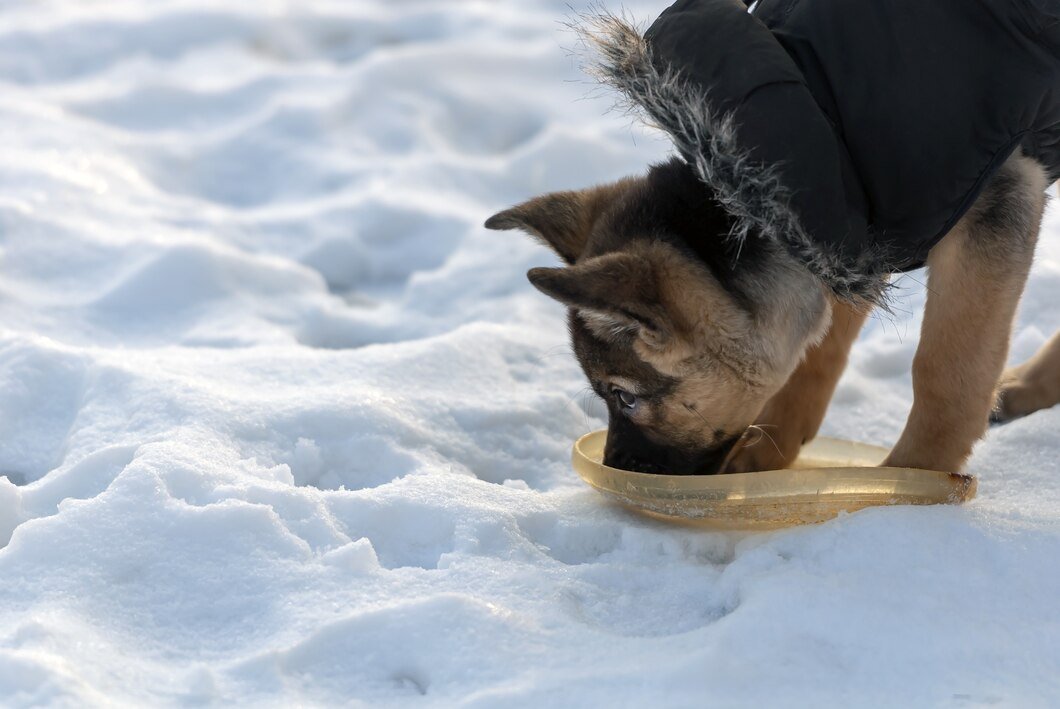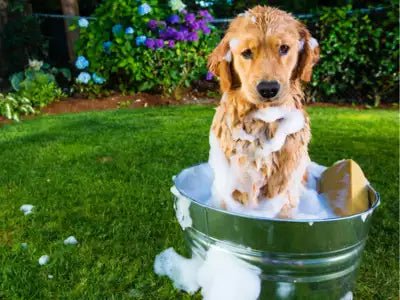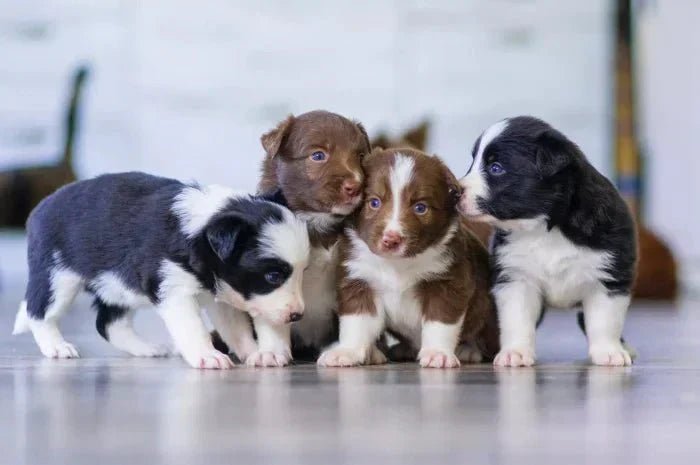Skin, Coat & Paw Care
What to Do for an Injured Dog Paw Pad: First-Aid & Care
A clear, vet-friendly first-aid routine for paw pad scrapes and burns—how to clean, protect, and monitor at home.
Learn moreNatural Paw Pad Care for Dogs & Cats | PawPurity®
Paw care beyond first aid: traction strategy, surfaces and hazards, bootie fit, home tweaks, cat-specific notes, and a simple, claim-safe conditioning routine.
Learn moreWhat Causes Cat Dander and Dandruff?
The cause of dandruff is caused by abnormal shedding of dead skin cells from the outermost layer of the epidermis. There are several reasons why this happens. Learn the causes of cat dandruff, ways to differentiate dandruff from dander, and skin issues. Read the ways to prevent and get rid of dandruff on cats for good.
Learn moreDry Skin in Dogs – How to Keep Your Dog’s Coat Healthy and Hydrated
Comprehensive overview of canine dry skin: common triggers, at-home management, bathing and diet considerations, and signs that warrant veterinary care.
Learn moreDog Paw Care: 7 Proven Tips to Prevent Cracked, Painful Paws
Is your dog limping or licking their paws constantly? Learn 7 proven paw care tips to prevent cracked pads, protect against hot pavement and ice, and keep your dog's paws soft and healthy year-round with natural solutions.
Learn moreFlea Treatment for Dogs Without a Vet Prescription
Natural Flea Spray for Dogs | Safe, Chemical-Free Protection Repel fleas naturally with PawPurity’s powerful chemical-free flea spray. Safe for sensitive dogs. No toxins, no vet visit—just daily protection that works. Shop now!
Learn moreDog Paws in Snow: Complete Guide to Winter Paw Protection | PawPurity
Discover how to protect dog paws in snow this winter. Learn about the dangers of ice, salt, and cold weather on your dog's paw pads, plus expert tips on booties, paw care routines, and natural remedies to prevent cracked paws and frostbite. Keep your furry friend safe and comfortable all winter long with our complete guide to winter paw protection.
Learn moreDog Paw Care: Complete Guide for Healthy Paws Year-Round
Is your dog limping or constantly licking their paws? Learn everything you need to know about maintaining healthy dog paws year-round. This complete guide covers daily care routines, seasonal protection strategies, common paw problems and solutions, and expert prevention tips to keep your dog active and pain-free.
Learn moreHow to Choose a Cat Shampoo
Discover how to choose the best cat shampoo for your feline's specific skin condition. Learn about safe ingredients, toxic chemicals to avoid, and expert tips for keeping your cat's skin healthy and irritation-free.
Learn more1,4-Dioxane in Pet Shampoos: Harmful Chemical Found in Dog Products | PawPurity
States are enacting laws to ban 1,4-dioxane in pet shampoos after this cancer-linked chemical byproduct was found in many dog grooming products. Learn how to protect your pet with safe alternatives.
Learn moreCelebrate National Puppy Mill Survivor Day – Find Out What it is All About
In today’s society, it is easy to get wrapped up in the day-to-day activities and forget about the bigger picture. That is why it is essential to take a step back and remember what is truly important. National Puppy Mill Survivor Day is all about doing just that. This day is dedicated to raising awareness about puppy mills and the dogs affected by them. It is a day to celebrate the survivors and educate others about these mills’ horrors. What is Puppy Mill Survivor Day? Puppy Mill Survivor Day is a day to celebrate all the dogs saved from puppy mills. This day is commemorated each year on the 30th of September. Puppy mills are commercial dog breeding facilities that mass-produce puppies for sale. The conditions in these mills are often deplorable, with the dogs living in crowded, filthy cages and being given little to no veterinary care.On Puppy Mill Survivor Day, we remember all the dogs who have suffered in puppy mills and celebrate those who have been lucky enough to be rescued. This day is also a reminder to do our part in ending the cruelty of puppy mills by refusing to buy puppies from pet stores or online sellers. Instead, adopt a dog from a shelter or rescue group or purchase from a responsible breeder who puts the health and welfare of their dogs above profit. Why Celebrate Puppy Mill Survivor Day? This is a day raise awareness of the problem of puppy mills and celebrate the dogs rescued from them. It is estimated that there are thousands of puppy mills in the United States, with many more around the world. These mills churn out puppies for profit without regard for the welfare of the animals. Puppies from puppy mills often end up in shelters or rescue groups, where they can finally get the love and care they deserve. Facts About Puppy Mills Puppy mills are commercial dog-breeding businesses prioritizing profit over their dogs’ welfare. Here are five facts you may not know about puppy mills: Puppy mills often keep dogs in cramped, unsanitary conditions with little to no veterinary care. Dogs in puppy mills are typically bred at an early age and forced to produce litters of puppies year after year. Many puppy mill dogs never experience human companionship or even basic obedience training. When puppies from puppy mills are sold, they often come with health and behavior problems that can be costly for owners to address. Puppy mill dogs may suffer from physical and psychological problems due to poor treatment. How to Get Involved in Puppy Mill Survivor Day Attend an event: Many cities host Puppy Mill Survivor Day events, typically including walks, rallies, and other awareness-raising activities. Check online or on social media to see if there is an event happening near you. Host an event: If there isn’t any event happening in your area, you can always host your own! Gather some friends together and do something to raise awareness about puppy mills, such as holding a bake sale or setting up a booth at a local fair or market. Donate to a rescue organization: Many organizations are working to rescue dogs from puppy mills and provide them with the care they need. Consider donating to one of these groups in honor of Puppy Mill Survivor Day. Many rescues and shelters dedicate their time and resources to helping these dogs; your donation can make a big difference. Spread the word: Share information about Puppy Mill Survivor Day with your friends and family, and help raise awareness about the issue of puppy mills. Use the hashtag #PuppyMillSurvivorDay on social media to help raise awareness. Work Together! Help put an end to puppy mills by adopting from a reputable rescue or shelter or purchasing from a well-researched breeder. Help spread the word about the realities of the commercial dog breeding industry. Buying a dog from a pet store or unreputable online breeder supports the puppy mill industry. Let’s work together to save our fur friends!
Learn moreWhat Is The Best Pet Shampoo?
Not all pet shampoos are created equal—and many could be doing more harm than good. In this in-depth guide, we uncover the truth behind common pet shampoo ingredients, from toxic preservatives like parabens and formaldehyde-releasers to misleading artificial fragrances made from crude oil derivatives. You’ll learn how to decode labels, spot dangerous ingredients, and understand how they affect your pet’s skin, coat, and overall health. Plus, we share our founder’s personal journey that inspired the creation of PawPurity’s 100% natural line of grooming products. If your pet suffers from itching, hot spots, or chronic skin issues, this blog is a must-read to protect their health—starting with what you use to bathe them.
Learn moreSix Ingredients to Avoid in Pet Shampoos
Not all pet shampoos are safe—and the label won’t always tell you that upfront. This blog shows you how to read pet shampoo labels like a pro, so you can spot harmful ingredients such as sulfates, parabens, artificial fragrances, and formaldehyde-releasing preservatives. Learn how to avoid products that irritate your pet’s skin or disrupt their immune system, and discover what to look for in a truly safe, natural shampoo. If your goal is a healthy, shiny coat and itch-free skin, it starts with understanding what’s really in the bottle. Would you like a shortened version for a homepage feature or email preview text? yes
Learn moreHow to Protect Newborn Puppies and Kittens with Sensitive Skin
Newborn puppies and kittens have thin, sensitive skin and weak immune systems, making them highly vulnerable to rashes, allergies, and infections. Learn how to spot early signs and why PawPurity® Biogreen Enriched Shampoo is the safest natural protection.
Learn moreHyperpigmentation in Dogs: Causes, Treatment & Prevention (2025)
Learn about hyperpigmentation in dogs, including causes like genetics, hormones, and environmental factors. Discover natural treatment options and prevention strategies to protect your pet's skin health.
Learn moreWhy is My Puppy’s Skin Peeling? Puppy Pyoderma
If you’ve just brought home a new puppy and notice its skin peeling, you may be wondering what’s going on. Puppy pyoderma is a common skin condition in puppies that can cause the skin to peel, itch, and bleed. This article will look at what causes puppy pyoderma and how to treat it. So, if your new pup suffers from this condition, keep reading! What Is Puppy Pyoderma, And What Are The Symptoms? Puppy pyoderma is a condition that results in the skin of puppies peeling. It is most commonly seen in young dogs between six weeks and six months. The condition is believed to be caused by an overgrowth of bacteria on the skin. This can happen when the puppy’s immune system is not yet fully developed. Puppy pyoderma is usually characterized by red, scaly patches on the skin. The affected areas may also be itchy and inflamed. In some cases, the skin may also weep or ooze pus. If left untreated, puppy pyoderma can lead to serious health problems such as infections and dehydration. Luckily, the condition can be easily treated with shampoos, antibiotics, and topical care. If your puppy may have pyoderma, it is important to take him to the vet for a diagnosis and treatment plan. Causes of Puppy Pyoderma According to VCA Animal Hospitals, bacteria most often cause puppy pyoderma, but viruses, fungi, or parasites can also be the cause. Puppy pyoderma can be very painful and itchy, leading to secondary infections if not treated promptly. The most common bacteria that cause puppy pyoderma are Staphylococcus aureus and Streptococcus species. Puppies with pyoderma may also have a fever, loss of appetite, and weight loss. Treatment for puppy pyoderma typically includes a non-chemical shampoo, antibiotics, antihistamines, and topical corticosteroids. In severe cases, puppies may need to be hospitalized for intravenous antibiotics and fluid therapy. Prevention of puppy pyoderma includes good hygiene, prompt treatment of any skin infections, and avoidance of contact with other dogs that may have skin infections. Treatments for Puppy Pyoderma Although pyoderma can be caused by several different factors, including allergies, bacteria, and parasites, the most common form of the condition is caused by a bacterial infection. Fortunately, several treatments for puppy pyoderma are effective, and most puppies respond well to treatment. According to The Canadian Veterinary Journal, antibiotic medications are often prescribed to help clear up the infection, and shampoos can be used to soothe the skin and reduce inflammation. In severe cases, puppies may need to be hospitalized for intensive treatment. However, with prompt and proper treatment, most puppies fully recover from pyoderma within a few weeks. PawPurity Antibacterial Shampoo PawPurity’s antibacterial shampoo is an effective natural treatment for puppy pyoderma. The shampoo works by killing the bacteria that are causing the infection, and it also helps to soothe the skin and prevent further irritation. PawPurity’s antibacterial shampoo is safe for puppies and dogs of all ages and gentle enough for weekly use. Unlike some other antibacterial shampoos, PawPurity’s shampoo will not dry out your dog’s skin or leave behind any harmful chemicals. In fact, it’s a humectant shampoo with many ingredients that balance your pet’s skin PH levels and natural oils. For best results, use PawPurity’s antibacterial shampoo on your puppy at least twice a week and visit your veterinarian if the condition does not improve right away. PawPurity Shampoo Prevention Tips While puppy pyoderma is usually not serious, it can be quite uncomfortable for your pet. Fortunately, a few simple prevention tips can help keep your puppy healthy and happy. First, make sure to keep your puppy’s vaccinations up to date. This will help to reduce the risk of your pet contracting the infection from other animals. Second, avoid letting your puppy play in areas where other dogs have been known to relieve themselves. This includes public parks and dog beaches. Finally, make sure to bathe your puppy regularly using a gentle shampoo. Following these simple tips can help prevent puppy pyoderma and keep your furry friend healthy and happy. Long-Term Effects of Puppy Pyoderma One of the most common long-term effects of puppy pyoderma is scarring. The pustules and crusts can damage the skin, leading to the development of scars. In addition, puppy pyoderma can also cause hair loss. The pustules can damage the hair follicles, resulting in hair loss. Finally, puppy pyoderma can also lead to secondary infections. If the pustules are not treated properly, they can become infected with bacteria or fungi. These infections can be difficult to treat and may cause further damage to the skin. For these reasons, prompt treatment for puppy pyoderma is important. Takeaway In conclusion, if your puppy is experiencing skin peeling, it is likely due to Puppy pyoderma. This is a common and easily treatable condition, but if left untreated, it can become more serious. If you think your puppy may have Puppy pyoderma, contact your veterinarian for diagnosis and treatment. Early diagnosis and intervention are key to preventing long-term health problems for your pet. Have you ever had to deal with puppy pyoderma? What was the outcome? Let us know in the comments below.
Learn moreFolliculitis in Dogs: Harmful Flea Shampoo Ingredients to Avoid
Many flea shampoos contain harsh chemicals that cause folliculitis in dogs. Learn which toxic ingredients to avoid and discover safe, natural alternatives that protect your dog's skin.
Learn moreHot Spots on Dogs: Fast Relief & Prevention Guide (2025)
Discover fast, natural relief for hot spots on dogs. Learn what causes these painful skin infections, how to recognize symptoms early, and proven prevention strategies to keep your dog comfortable and healthy.
Learn moreDifferent Forms of Mange on Dogs – What You Need to Know
Many pet owners may be all too familiar with the discomfort and inconvenience of mange on their dog. Mange is a skin condition caused by mites that can cause hair loss, extreme itchiness for the dog, and redness on parts of the skin. To understand how best to address mange on your pet, it is important to know about the two different types of mange: sarcoptic and demodectic. Fortunately, there are ways that pet owners can learn more about different types of mange on dogs and provide the right medicine to help their furry friends. This article will discuss the differences between these two forms of mange so that pet owners may be adequately informed and prepared to take action to help their pup find relief from their uncomfortable symptoms. 1. Sarcoptic Mange (Canine Scabies) The most common form of mange on dogs is sarcoptic mange, also known as canine scabies. It is caused by a microscopic mite called Sarcoptes scabiei that burrows into the top layer of skin and lays eggs there. This causes intense itching and scratching due to an allergic reaction to the mites and their saliva, leading to inflammation, hair loss, and crusty lesions all over the dog’s body. Treatment for sarcoptic mange typically consists of oral or topical medications prescribed by a veterinarian along with weekly baths using medicated shampoo. Symptoms and Causes of Sarcoptic Mange: An early diagnosis offers an easy treatment. Image Source: Wiley Online Library Symptoms of sarcoptic mange can vary depending on the severity of the condition. However, in general, it includes: Intense itching Redness Inflammation Hair loss Crusting of the skin Secondary bacterial infections The scabies mite burrows into the deeper layers of the skin where it lays eggs and reproduces. This causes an inflammatory response in the body as it attempts to defend itself from these foreign invaders. The most common cause of sarcoptic mange is contact with another animal that has the disease. It is so contagious and easily spread through close contact or contact with contaminated bedding or grooming tools. Thus, you must be aware of any signs of infection when in contact with a potentially infected pet. In addition to direct contact with an affected animal, certain environmental factors, such as overcrowding or poor hygiene, can cause animals to become more susceptible to infection. Other underlying conditions such as allergies or immune system disorders may also increase the likelihood that an animal will develop sarcoptic mange. If left untreated, sarcoptic mange can lead to severe discomfort and fur loss due to scratching and biting at the affected area(s). It may also lead to secondary infections caused by bacteria entering through broken or scratched skin. 2. Demodectic Mange (Red Mange) Another type of mange that affects dogs is demodectic mange, also known as red mange. Unlike sarcoptic mange, this form of mange isn’t contagious. The main reason for this type of mange is a Demodex canis mite living on a dog’s skin but not reproducing on it. Most healthy dogs have these kinds of mites living on their bodies without issue. However, puppies whose immune systems are still developing or adult dogs with weakened immune systems may experience a severe reaction if they have too many Demodex canis mites present. Image Source: Western College of Veterinary Medicine Symptoms include irritation around the eyes and mouth that then spreads throughout the body, causing itchiness and hair loss at affected areas. Treatment typically involves long-term antibiotic therapy and daily medicated baths for up to four months or even longer in some cases. Symptoms and Causes of Demodectic Mange (Red Mange): The main symptom associated with demodectic mange is patchy hair loss, with redness and scaling on the skin due to inflammation. In some cases, it can lead to secondary bacterial infections and crusts appearing on the bald patches. The mites themselves are often visible as small white spots within the hair follicles or around the edges of affected areas. Dogs with demodectic mite infestation may scratch, but they do not usually itch as much as dogs with other forms of mange. The amount of itching usually depends on whether there is a secondary infection from scratches and if the dog has any allergies in its history. Other potential symptoms include thickening and darkening of the skin, loss of elasticity in the skin, and increased oiliness, which can lead to lesions or oozing pus due to a secondary infection. In severe cases, inflammation from excessive scratching can lead to hyperpigmentation (dark patches) on the skin which may take many weeks or months to go away after successful treatment. The most common cause of demodectic mange is an impaired or weakened immune system in the host, commonly seen in puppies, elderly dogs, and dogs with underlying medical conditions such as diabetes or cancer. A low-functioning immune system can allow the mites to overpopulate and cause localized or generalized skin irritation in affected areas. It is believed that an inherited predisposition could also play a part. Treatment for Mange in Dogs If your dog has mange, you should seek medical attention for mange treatment in dog as soon as possible. Look at the given treatment options available for mange in dogs so that you can make an informed decision about how best to care for your pet. 1. Topical Medications The most common treatment option for mange on dogs is topical medications such as ivermectin or amitraz. These medications are applied directly onto the affected area of the skin and work by killing off the mites causing the problem. They also help to reduce inflammation of the skin and reduce itching. 2. Oral Medications Oral medications such as milbemycin oxime or moxidectin are also sometimes prescribed to treat mange on dogs. For mild cases of mange, some veterinarians may prescribe medicated baths using products containing sulfur or benzoyl peroxide. These products help to kill off any remaining mites on the surface of the skin and reduce inflammation associated with severe cases of mange. Effective Home Remedies for Dogs Mange While veterinary care is the best way to treat a bad case of mange, there are also some effective home remedies that can help provide relief for your pup. These treatments include: Bathing with special medicated shampoos Applying oils to the affected area Feeding your dog healthy fats such as coconut oil and supplementing with vitamins and minerals. With consistency and patience, these simple steps can be used in combination with prescribed treatments to bring your furry friend some much-needed relief. Preventative Measures to Avoid Mange in Dogs To safeguard against parasitically-induced diseases such as sarcoptic mange, good hygiene, and preventive treatment are key. You must practice good hygiene and mite control measures. You can use PawPurity Flea & Tick Spray on a daily basis and use PawPurity Organic Intensive Nourishing Shampoo every other week to prevent your furry friends from this unpleasant experience. The herbal citrus scent of this organic shampoo and spray is pleasant for humans and acts as a repellant for insects. PawPurity Medicated Shampoo Additionally, if you have multiple pets, it is important to keep them separated from each other when possible since mites can spread quickly between animals living in close quarters. Remember to clean your hands after you touch an animal. If you have more than one pet, use different grooming tools and bedding for each pet. Also, regularly apply prescribed preventative topical treatments according to package instructions. Finally, regular check-ups with your veterinarian can help catch any signs of mange before it becomes too severe. If you think your pet has a chance of contracting this disease, reach out right away for professional medical advice from the vet. How Contagious Is Dog Mange? Now you know that there are two kinds of mange on dogs. Demodectic mange is caused by a type of mite called Demodex canis that lives in the hair follicles of dogs. This type of mange is not considered highly contagious, as the mites are usually passed from a mother dog to her puppies during the first few days of life. Dogs with weakened immune systems may be more susceptible to developing demodectic mange, but healthy adult dogs generally do not contract it from other dogs. On the other hand, man mange is caused by a type of mite called Sarcoptes scabiei, and it is highly contagious between dogs and even between dogs and humans. The mites burrow into the skin and can cause intense itching and discomfort. Direct contact with an infected dog or its bedding, as well as contact with objects that have come into contact with an infected dog, can spread sarcoptic mange. It is important to isolate infected dogs and thoroughly clean and disinfect their living area to prevent the spread of sarcoptic mange. If you suspect your dog has mange, it is important to consult with a veterinarian for a proper diagnosis and treatment plan. Wrap Up Mange is an uncomfortable condition that can affect our beloved canine companions if left untreated. Fortunately, there are several treatment options available for treating this condition depending on its severity. With proper preventive measures, you can help ensure that your pup stays healthy and happy. If your pet has sarcoptic or demodectic mange, you should go to the vet right away. This way, your pet can get the medicine it needs and get better before any other infections happen because of excessive scratching or other symptoms. With prompt diagnosis and treatment, most forms of canine mange can be cured fairly quickly. #MangeInDogs #DogsMange #MangeOnDogs #Mange
Learn moreProtecting Dog Paw Pads In Summer Heat
Protect Your Dog’s Paws Our furry family member’s well-being, and one often overlooked area is the paws. Protecting dog paw pads in summer heat is serious. These unique and sensitive parts of a dog’s body play a vital role in their overall health and mobility. Let’s delve into the importance of how to care for a dog’s paw pads, what temperatures are safe for walking, the dangers of extreme temperatures, the effects of hot surfaces, and how to care for dog paw pads in general. The Dangers of Summer’s Extreme Temperatures Just like human skin, dog paw pads in summer are susceptible to temperature extremes. Extremely hot temperatures can cause significant damage to its paw pads, leading to pain, discomfort, and even serious injuries. As a general rule, if a surface is too hot for you to comfortably place the back of your hand on for more than five seconds, it is too hot for a dog to walk on. Taking walks early or at night after the temperatures have cooled is one way of protecting a dog’s paws in summer. Effects of Hot Temperatures on Paw Pads Walking on hot surfaces can result in painful burns and blisters on your dog’s paw pads. Even short exposure to hot pavement, sand, or asphalt can cause thermal burns and lead to the pads peeling, cracking, or drying out. Such injuries can cause immense pain and discomfort for pets and may require veterinary attention. Protecting dog paws in the summer heat is in the hands of the pet owner. If the dog is prancing about and looking for shade, immediately take the pooch indoors. Injury Levels from Walking on Hot Surfaces There are varying levels of injury that dogs can sustain from walking on hot surfaces. Initially, mild discomfort may be experienced, which can progress to redness and swelling. Prolonged exposure to hot surfaces can result in burns, blisters, and painful sores on the paws in summer. In severe cases, the skin may peel or slough off, exposing raw tissue and necessitating immediate veterinary care. Maintaining Healthy Paw Pads in Summer Temperatures Unhealthy paw pads can be breeding grounds for various infections, including fungal and bacterial infections. Additionally, cuts, abrasions, and cracks in the pads can occur, which not only cause pain but also increase the risk of infection. Keeping your dog’s paw pads healthy during extreme temperatures is crucial to its overall well-being and quality of life. Safe and Dangerous Temperatures for Dogs to Walk On It is crucial to be aware of safe and dangerous temperatures for your dog to walk on. While dogs can tolerate a range of temperatures, it’s best to err on the side of caution. “If the temperature is 85 degrees or over without the chance for the pavement to cool down, the ground may be too hot for safely walking a dog,” says Dr. Klein. To find out if the ground is too hot for your dog to walk on, place your hand comfortably on the pavement for ten seconds. If it’s too hot for your hand, it’s too hot for your dog’s paws.” DR. JERRY KLEIN, DVM, CHIEF VETERINARY OFFICER FOR THE AKC AND AN EXPERT IN VETERINARY EMERGENCY AND CRITICAL CARE According to data reported by the Journal of the American Medical Association, when the air temperature is 86 degrees, the asphalt temperature registers 135 degrees. Below are approximate guidelines for SURFACE temperatures: Safe temperatures: Up to 100°F (37.8°C) Use caution: 100-125°F (37.8-51.7°C) Dangerous temperatures: Above 125°F (51.7°C) Various Surfaces on Paw Pads in Summer Different surfaces affect dog paw pads differently. Hot pavement or asphalt can retain heat and become scorching during warm weather, posing a significant risk of dog pad burns. Sandy surfaces, while generally cooler, can cause discomfort or irritation due to rough textures. Additionally, sharp rocks, gravel, or icy surfaces can cause abrasions or cuts. Regularly inspecting your dog’s paw pads and choosing appropriate surfaces for walks can help prevent injuries. Infections and Injuries One effective way to protect dog paw pads in summer is by using PawPurity Healing Paw Conditioner. This natural, non-toxic balm is specifically formulated to nourish, protect, and heal paw pads. It helps moisturize dry pads, soothe irritations, and promote healthy tissue regeneration. Regularly applying this conditioner can help maintain supple and healthy paw pads, reducing the risk of injuries and infections. Shop PawPurity Healing Paw Conditioner Now! We also recommend your pet wear dog shoes during extreme heat. There are many dog shoe manufacturers and styles. One that stands out in particular is Wagwear, as they have a large selection. Make sure to read return policies before purchasing however. Protecting dog paw pads in summer is a priority in keeping your pooch happy and healthy. Protecting Dog Paw Pads in Summer Heat Protecting dog paw pads in the summer heat is essential to a dog’s overall health and well-being. By being mindful of extreme temperatures, and avoiding hot surfaces. Regular monitoring, proper hydration, and keeping the paws clean and conditioned will go a long way in preventing infections and injuries. Don’t forget to check out PawPurity Healing Paw Conditioner!
Learn more
















